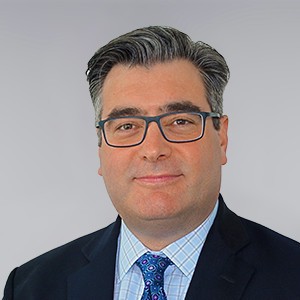- Video Library
- Randy AuCoin Presents Exact Imaging at LSI USA '23
Randy AuCoin Presents Exact Imaging at LSI USA '23

Randy AuCoin
Mr. AuCoin is a seasoned clinical executive with broad experience in all aspects of medical device operations. He started his career developing software in a medical device start-up and quickly realized his love for early stage companies and medical devices. Randy’s career is reflective of his passion for growing early stage medical device companies and spans a broad range of operational and managerial roles. Prior to Exact Imaging, he was a key executive in three other early stage ventures, helping to grow the companies’ valuation resulting in four liquidity events including one company which was sold twice based on the fundamental technology which Randy helped to develop and commercialize.
Randy is President and CEO of Exact Imaging, responsible for the company’s strategic direction, key operations and overseeing the development and global commercialization of its ExactVu™ micro-ultrasound platform. He joined Imagistx (now Exact Imaging) in 2011 as COO. In 2013 he became President and CEO, successfully restructuring the company into a Canadian entity, driving the Company’s strategy and fundraising, and building the Company’s management and operational teams. He also architected and led the company’s multi-site clinical trial. Randy has also successfully raised over $43 million in financing.
Prior to Exact Imaging from 2003 – 2011, Randy was Vice President, Quality Assurance and Regulatory Affairs at VisualSonics (sold in 2010 to Sonosite (SONO: NASDAQ)) and was responsible for the development and execution of all quality assurance and control efforts as well as directing all regulatory affairs and clinical programs. He directed VisualSonics’ achievement of ISO 9001 quality certification within its first 2 years of operation. He also led all clinical investigations including the original efforts into successfully validating the Imagistx’s opportunity leveraging the VisualSonics technology for prostate imaging. He also contributed to the quality system that successfully delivered over 1,500 VisualSonics high resolution-ultrasound systems with an extremely high-level of quality and customer satisfaction.
From 2000 to 2003, Randy was Manager of Engineering, QA & RA at Dicomit DICOM Information Technologies (acquired by Cedara software). From 1998 to 2000, Randy was a Y2K consultant with Ontario Hydro. Previously, from 1990 to 1998, Randy worked in cardiology as a principal engineer with Biomedical Instrumentation Inc. (acquired by American Home Products and re-branded as Quinton Electrophysiology Corporation). Quinton Electrophysiology was eventually acquired by Pruka Engineering.
Randy AuCoin
Mr. AuCoin is a seasoned clinical executive with broad experience in all aspects of medical device operations. He started his career developing software in a medical device start-up and quickly realized his love for early stage companies and medical devices. Randy’s career is reflective of his passion for growing early stage medical device companies and spans a broad range of operational and managerial roles. Prior to Exact Imaging, he was a key executive in three other early stage ventures, helping to grow the companies’ valuation resulting in four liquidity events including one company which was sold twice based on the fundamental technology which Randy helped to develop and commercialize.
Randy is President and CEO of Exact Imaging, responsible for the company’s strategic direction, key operations and overseeing the development and global commercialization of its ExactVu™ micro-ultrasound platform. He joined Imagistx (now Exact Imaging) in 2011 as COO. In 2013 he became President and CEO, successfully restructuring the company into a Canadian entity, driving the Company’s strategy and fundraising, and building the Company’s management and operational teams. He also architected and led the company’s multi-site clinical trial. Randy has also successfully raised over $43 million in financing.
Prior to Exact Imaging from 2003 – 2011, Randy was Vice President, Quality Assurance and Regulatory Affairs at VisualSonics (sold in 2010 to Sonosite (SONO: NASDAQ)) and was responsible for the development and execution of all quality assurance and control efforts as well as directing all regulatory affairs and clinical programs. He directed VisualSonics’ achievement of ISO 9001 quality certification within its first 2 years of operation. He also led all clinical investigations including the original efforts into successfully validating the Imagistx’s opportunity leveraging the VisualSonics technology for prostate imaging. He also contributed to the quality system that successfully delivered over 1,500 VisualSonics high resolution-ultrasound systems with an extremely high-level of quality and customer satisfaction.
From 2000 to 2003, Randy was Manager of Engineering, QA & RA at Dicomit DICOM Information Technologies (acquired by Cedara software). From 1998 to 2000, Randy was a Y2K consultant with Ontario Hydro. Previously, from 1990 to 1998, Randy worked in cardiology as a principal engineer with Biomedical Instrumentation Inc. (acquired by American Home Products and re-branded as Quinton Electrophysiology Corporation). Quinton Electrophysiology was eventually acquired by Pruka Engineering.

17011 Beach Blvd, Suite 500 Huntington Beach, CA 92647
714-847-3540© 2025 Life Science Intelligence, Inc., All Rights Reserved. | Privacy Policy







